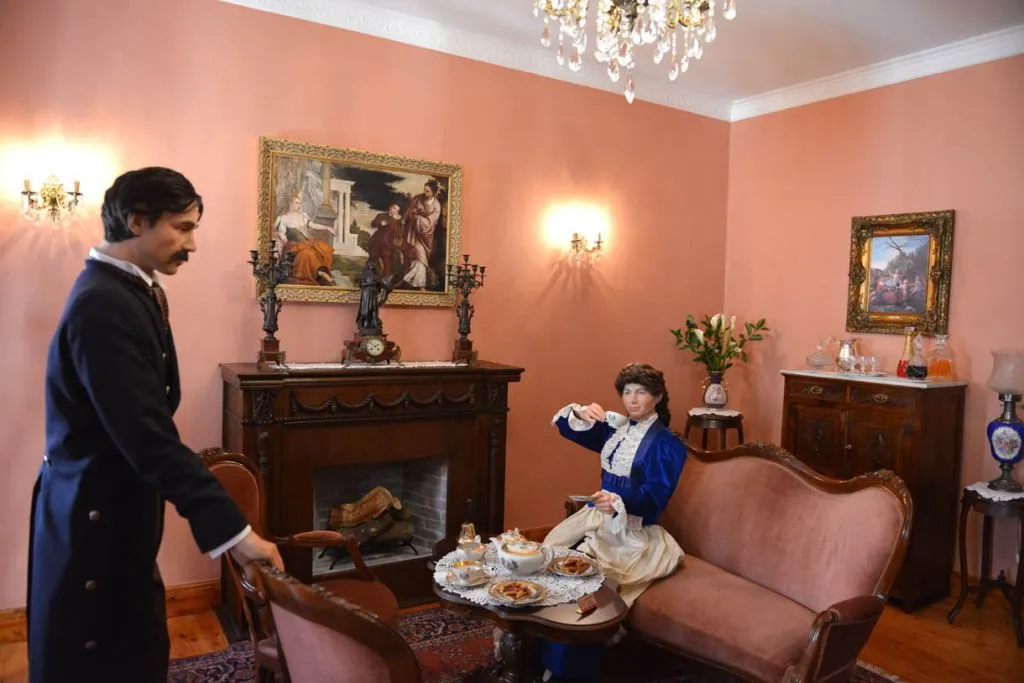Discover Corfu
Top Attractions, Hidden Treasures, and Breathtaking Views Await!
A Journey Through History and Nature
Top Attractions in Corfu
Your Ultimate Guide to Exploring the Island’s Hidden Gems, Historic Landmarks, and Breathtaking Natural Wonders. Uncover Must-See Attractions, Scenic Beaches, and Cultural Treasures Awaiting Every Visitor!
Around 10 kilometers from Corfu town center, the small traditional village of Gastouri rises to an altitude of 77 meters and has just under a thousand inhabitants. It is most famous for being home to the beautiful Achilleion palace, where Sissi lived (the real one, far less luminous than the one immortalized by Romy Schneider). Perched on the heights of Gastouri, the Achilleion dominates the bay. On the horizon, lushly vegetated cliffs tumble down to the emerald sea and a cove hemmed in foam. All around, Italian-style gardens are filled with mythological figures. You can also stroll through the village, which boasts five pretty churches.
Mon Repos is known for its palace built in 1831, which welcomed many honourable guests: Empress Elizabeth of Austria, but also King George I of Greece - who named the place after him because it was his second home, where he came to seek "his rest". Prince Philip of Greece, the future husband of Elizabeth II of England, was born there in 1921. The villa and garden, a little off-centre, are now a kind of archaeological museum of the old town of Corfu housing some finds from the Ionian region.
Here's an original approach: a guided tour of a... living museum. It may seem a little expensive, but the guides are passionate about what they do. Suddenly, you're plunged into the heart of a neoclassical bourgeois house, which recreates the life of the city's aristocrats in the 19th century. The decor is reproduced with incredible fidelity, using automata. All the senses are called upon to help you grasp this slice of past life: you can hear the piano, smell the smells of the kitchen... The tour is led in French by a very interesting guide.
This renovated museum, housed in a modernist-inspired setting, still contains one of the most beautiful sculptures of Greek antiquity, the Gorgon Pediment (6th century BC). This terrifying creature crowned with snakes was enthroned on the pediment of the archaic temple of Artemis on the Kanoni peninsula. You will also find the famous Lion of Menecrates (7th century BC) and the archaic pediment representing the Dionysian banquet. However, following a large number of discoveries, it was deemed necessary to enlarge it and to better organize the more than 1,600 pieces that make up the institution's permanent collection.
It is Greece's only museum dedicated to Asian art. The museum is housed in a neoclassical Venetian building constructed in 1819 as the headquarters of the British High Commissioners. Founded in 1927, thanks to a donation of 10,000 objects by a Greek diplomat, it contains Chinese lacquerware, samurai weapons and statuettes and bronzes from other Asian countries.
The church, built in 1589, is named after the patron saint of Corfu, a native of Cyprus, and can be recognized by its clock and its red dome. The mummified body of the saint has been lying in the crypt since 1590 and is the object of pious veneration. A large procession is held on 11 August in memory of the day in 1716 when, according to legend, Spiridon appeared to the Corfiotes, brandishing a torch and putting the Turkish besiegers to flight.
Open only on Jewish holidays. Of the four synagogues that existed in Corfu, there is only one left, the "Scuola Greca", built in the 18th century. Painted yellow on the outside, the synagogue was built in the Venetian style. Outside the synagogue, a plaque reminds us that the writer Albert Cohen was born here and that many of his works are set on his native island.
The English, who were present for half a century from 1815 to 1864, developed the Esplanade(Spianáda in Greek) where they installed a cricket field. They also built, under the commission of Sir Thomas Maitland and thanks to the architect Sir George Whitemore, the St. Michael and St. George Palace to the north of the Esplanade. The palace was first used as the seat of the British governor. A sumptuous neoclassical palace with 32 Doric columns, it became one of the royal palaces when Corfu became part of Greece. Today it houses the Asian Art Museum.
Even today, Kanoni is still the "postcard" and one of the most famous sights of Corfu. It is hard to resist. The proof is that it is still the most photographed site. About twenty minutes from the port and the old town, this islet, attached to the land by a long dike, shelters a cute little whitewashed church. If the place owes its name to a cannon abandoned by Napoleon's troops, history will remember that this is also where the capital of the island stood during Antiquity. However, with the exception of two excavation sites, archaeologists have never really conducted any research on the spot.
Welcome to Corfu! The island's capital, one of Greece's most beautiful and pleasant towns, is divided into two parts: the old town and the new town. The old town, which has remained intact despite the bombings, still boasts an enchanting blend of European influences. Elegant Venetian buildings with typical balconies and shutters dominate French-style colonnades and harmoniously face English colonial houses. Corfu is also dominated by two imposing Venetian fortresses. Today's ramparts are those of the Venetian era, later modernized by the British. The modern part of the city complements this ensemble very well, with large, green, airy squares where you can feel the heart of the city beating.
This "old fort" was considered ideal for building a fortified town. Easy to defend and overlooking the sea, it can be used as a checkpoint to observe the comings and goings on the coast. On the north side of the acropolis, you will see a small artificial harbour. The first fortifications were built by the Byzantines at the beginning of the 8th century. At XVIe siècle , threatened by the Ottomans, the Corfiotes erected additional towers, the west gate, a second moat and a third defensive line around the two peaks.
Nothing to say, here everything slides. It's a very fun park, well designed, with lots of different slide varieties. A water park with a lot of attractions and other wave pools for your toddlers to enjoy. Admission is not free, but you will have a great day. Within the building there are cafeterias, restaurants, ice cream parlours, a bar, a shop... Many deckchairs are available free of charge throughout the park, so that older children won't get bored either!
Must-Visit Beaches Near Ephoria Suites
Discover Corfu's Best Beaches
Discover the breathtaking beaches of Corfu, just a short distance from Ephoria Suites. With crystal-clear waters and golden sands, these coastal gems are the perfect escape for sunseekers and nature lovers. Whether you’re searching for hidden coves or vibrant shores, Corfu’s best beaches await—conveniently located near Ephoria Suites for an unforgettable seaside experience.
Located on the northwest coast of the island of Corfu, this sandy beach is said to have welcomed Ulysses and served as his shelter. Given the calm and serenity of the site (outside the height of summer), we want to believe it. You will easily fall in love with this beach with a view, easily accessible wherever you are on the island. As a family, you'll see the kids wading in the clear water and jumping in the gentle waves. The sand here is soft and beautiful. The only downside is that you have to fight your way to a small spot. In the middle of summer, the deckchairs are not cheap, but you will have a wonderful day.
On this part of the island, the roads zigzag and the coves follow one another, each more beautiful than the next: Kalami, Barbati, Nissaki... Located 18 km from Corfu City, Barbati was born from the meeting of the rocks of Mount Pantocrator and the crystal clear water of the Ionian Sea. This village, wedged between these two spectacular natural elements, relies heavily on the beauty of its one-kilometre beach to attract families and tourists in search of relative tranquillity. However, it should be noted that the accommodation on offer is of a high standard and that there are free car parks all along the beach, making it easily accessible.
To go or not to go? In season, leave early. To avoid the heat, first of all, but also because you won't be the only ones to have this idea. By car, park at the top on the dirt road (where there are not too many places) and walk down by another one of dirt and dust. During the day you can swim here even if there are not many places. In reality, people come here mainly for the walk and the 360° panoramic view. You can also walk from the Canal d'Amour to the Cape Drastis. It's magical. Another option is to rent a boat in Agios Stefanos or Sidari to discover it by sea. Either way, the sunset is fantastic!
Glyfada is located 17 km southwest of Corfu Town and is easily and quickly accessible by bus. Rare in Corfu, Glyfada is a large beach with ochre sand and turquoise water. It is a beautiful and large sandy beach surrounded by mountains, often very windy, but with nice waves. Unfortunately, in summer, it is quickly invaded by tourists. Don't miss Mirtiotissa, another beautiful beach on the island, which is very close. It is picturesque, but the smaller beach is also very quickly besieged by parasols. If possible, come early in the morning or late in the afternoon.
One of the main beauties of the north of the island is here, the natural passage formed by the sandy reliefs emerging from the sea and called "Canal d'Amour". With beautiful rock formations and hidden bays, the beach is - at certain times of the day and year at least - one of the prettiest beaches in Corfu. Victim of its success, it is often crowded in high season... Otherwise, from the lively town of Sidari, going down south, you will also find unspoilt beaches that are less popular with mass tourism. For this, head for Aghia Pelaghia, Aghios Stefanos Avlioton or Arilas.
20 km north-west of Corfu Town, on the way to Palaiokastritsas, Liapades is a beautiful beach, very popular in July. Unsurprisingly, there are plenty of sunbeds and umbrellas available for a fee. But they're well worth the detour, allowing you to spend the whole day on a magnificent beach. A few fish, sea urchins and starfish can be discovered on the shore (wearing sea slippers will make the experience even more pleasant). Next, the jagged underwater terrain descends fairly quickly. A few boulders also allow you to jump up to 5 metres high. The boulders and their clear water holes are also quite photogenic.
EXPLORE MORE
Other experiences that you might like

Crystal Clear Beaches
Paleokastritsa beach

Corfiot Cuisine
Authentic Local Flavors
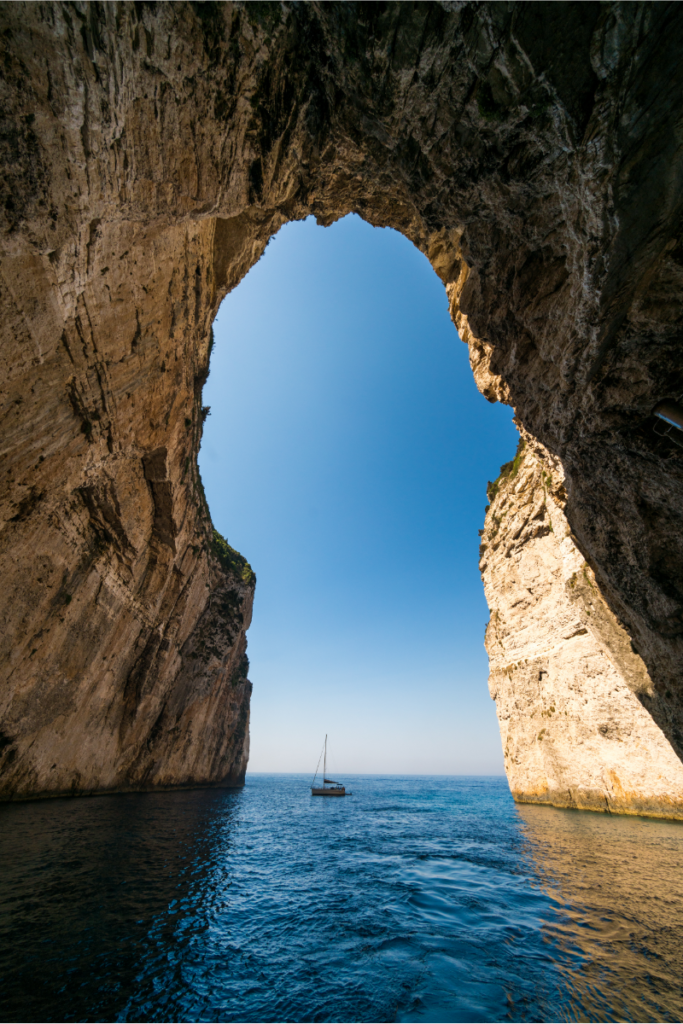
Hiden Paradise
The Enchanting Caves Beach
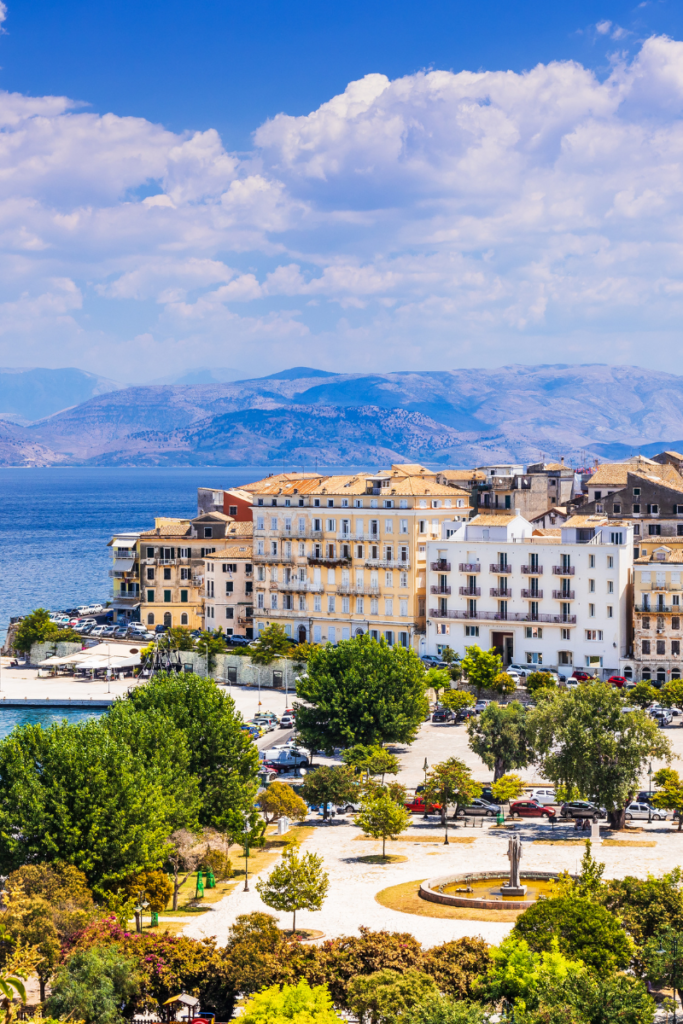
Historic Elegance
Capital Town of Corfu

Live Greek music
Enjoy live Greek music at local tavernas
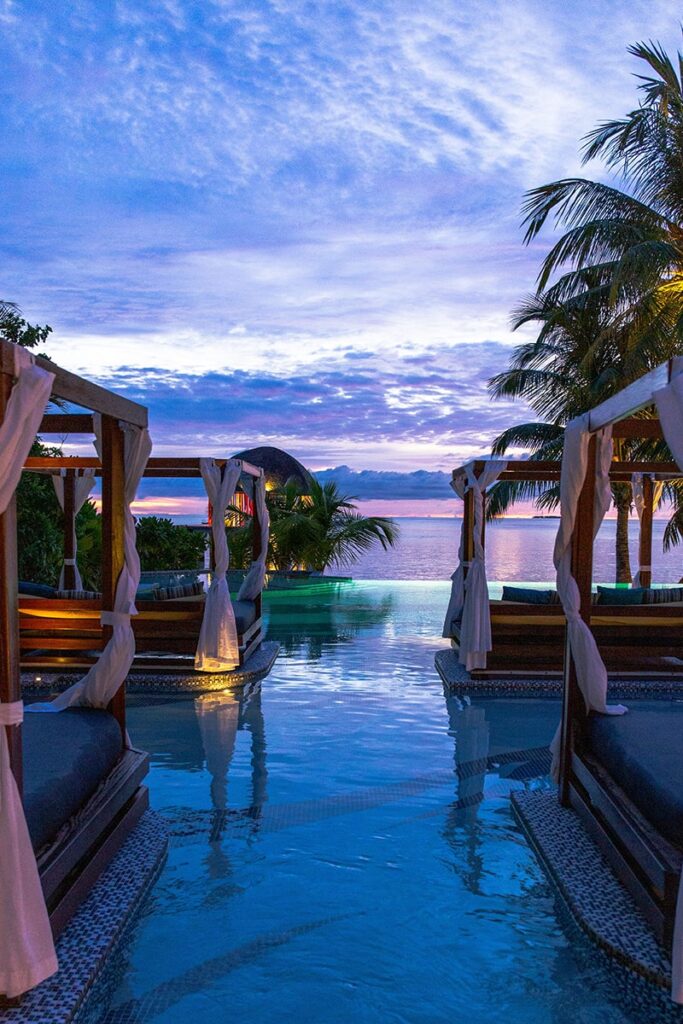
Sunset Sips
Relax by the sea at waterfront bars

vibrant nightlife
Dance at vibrant beach clubs in Kavos
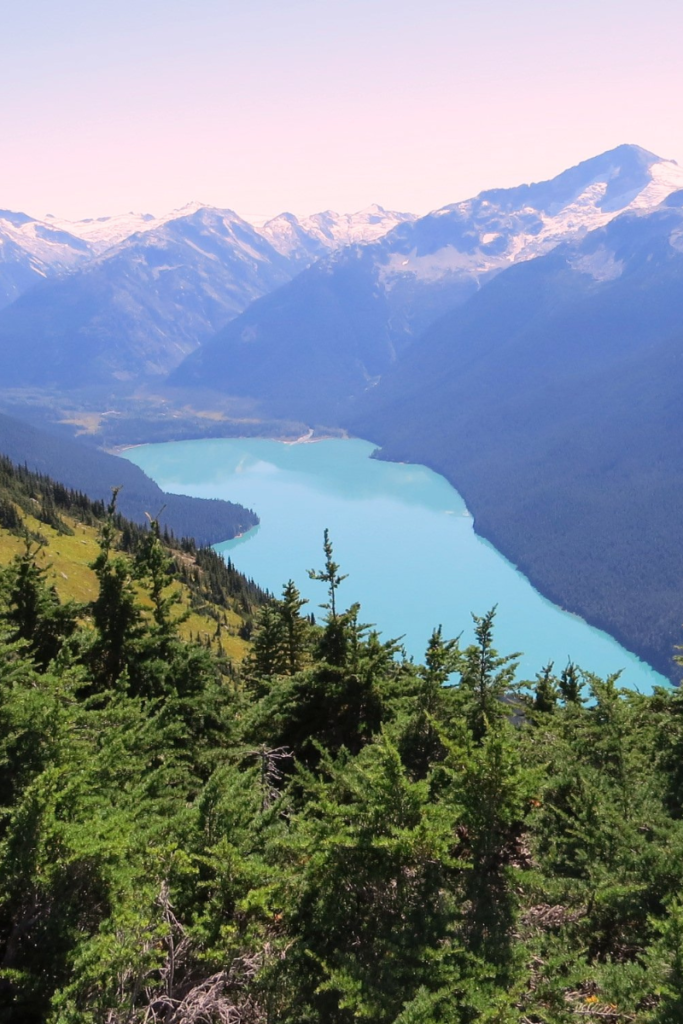
Stunning Views
Pantokrator Mountain
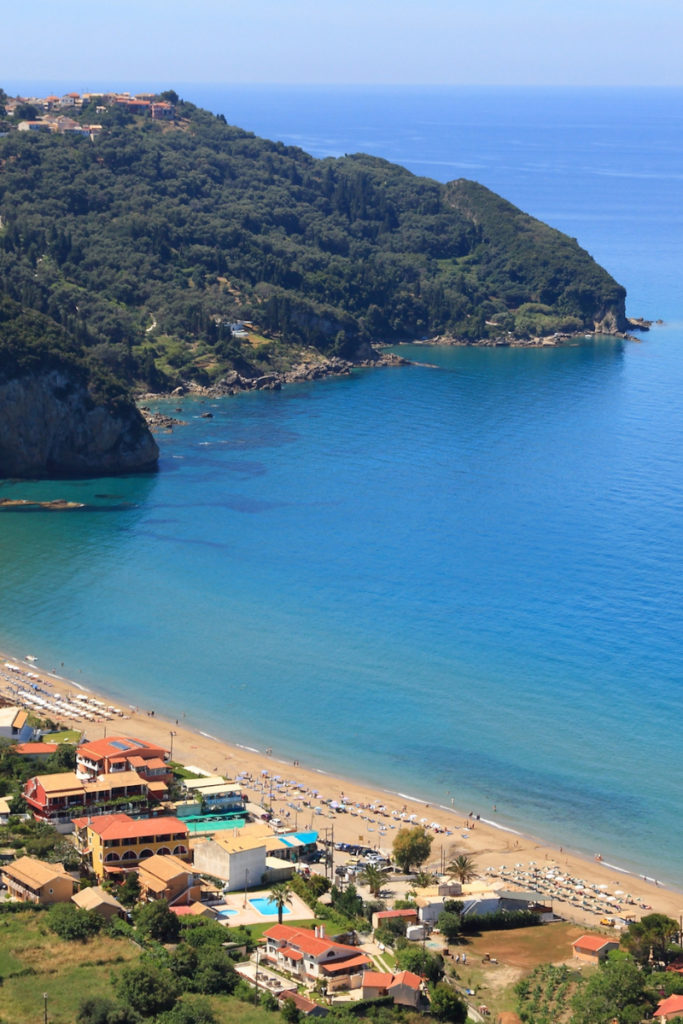
Ideal for water sports


